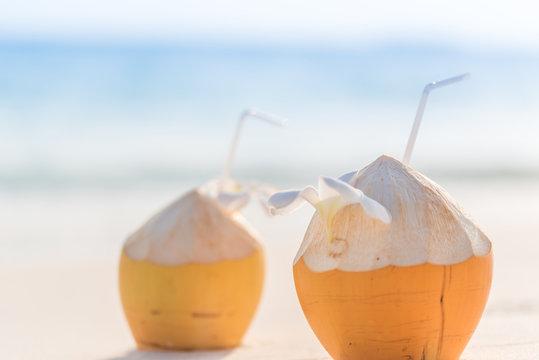Unveiling the Aromatic Majesty of Ceylon Cloves
Apr 22, 2024

The King coconut, scientifically identified as Cocos nucifera var. aurantiaca , is a tropical nut belonging to the Arecaceae family (palm family). Endemic to Sri Lanka, the King coconut holds significant value due to the liquid endosperm contained within its cavity, famously known as King coconut water or Thambili. This water is rich in sugars, essential minerals, vitamins, and amino acids, making it a highly regarded natural beverage with promising export potential. However, challenges such as high air freight expenses and limited cargo space have prompted exporters to explore methods to extend its shelf life, thereby reducing costs through more economical sea freight options.
Due to the composition of mineral and sugar included in king coconut water, it has a pleasant taste. However, these parameters can be changed with the maturity and the duration of harvesting. The ideal stage of harvesting king coconut water for drinking at 7 -8 months after pollination because at this stage nut water has maximum level of glucose and fructose concentrations, low concentration of sucrose, neutral pH level, optimum levels of minerals and vitamins.
Nutritional value
The total sugar content is 5-6g/100ml and 95-97% are invert sugar at this stage.
Tender king coconut water is rich in potassium (More than 50% of mineral content), and it includes high chloride, calcium and magnesium contents.
Amino acids like arginine and glutamine present in tender king coconut water.
Improving shelf life for export market
It is crucial to inspect the tender king coconuts for any signs of insects or mechanical damage prior to sending them to the market. Additionally, assessing the palatability of the coconut water before collecting it for export is essential. Hence, there exists a protocol recommended for both growers and exporters to follow in this regard.
Choose tender king coconuts that are 7-8 months old. In determining maturity, the leaf canopy of a king coconut palm is assigned numbers. When counting, if the flag leaf is designated as number 1, the bunch of coconuts at 7-8 months of age is typically attached to the axis of frond number 14.
Pick and transport harvested tender king coconut on the same day with extreme care to minimize fresh mechanical damages.
Detach the nuts from the bunch as closely as possible to the pedicel end of the nut using a sharp knife disinfected with technical-grade alcohol. It is crucial to avoid bruising or crushing the stalk during this process. Neglecting care at this stage may lead to early spoilage.
With a piece of cotton cloth, cotton wool, or paper tissue, disinfect the remaining part of the stalk, including the cut surface and connecting position, the perianth area, and the outer skin of the nut. Use a diluted fungicide solution consisting of 0.6 grams of Benlate per liter of water for this purpose.
Allow the nuts to air dry for a few minutes.
Wrap the entire nut with polypropylene cling film. It is recommended to wrap it in a manner that ensures the film adheres closely to the skin of the nut. This should be done with care to prevent any air spaces between the cling film and the nut, as this could result in discoloration and shrinkage of the skin.
Cover each nut with a net packing to avoid mechanical damages during transport.
Pack 68 nuts, positioning each with the stalk end facing upwards, into a 7-ply corrugated carton equipped with 6 vents.
Soon after packing, load the packed cartons to a cold reefer container maintained at 13 to 15°C (55 to 59°F) temperature, for transport.
Transfer the cartoons to a cold reefer container maintained at 13 to 15°C (55 to 59°F) to a cold reefer truck maintained at a temperature of 13 to 15°C (55 to 59°F) and a relative humidity of 70% for sea freight.
These storage requirements must be upheld throughout sea freight, transportation from the seaport to sales outlets, and at the retail location. Following sea freight, should the nuts be subjected to elevated temperatures, such as 25-27°C, their shelf life at that specific temperature is limited to only 4 days. Conversely, if the nuts are consistently stored within the range of 13 to 15°C their shelf life extends to 28-30 days from the date of harvesting .
Opening of the nut
There are 2 methods
References: C.S.Ranasinghe and R Wimalasekara, Technical guidelines to enhance shelf life of tender king coconut for the export, Senior plant physiologist, plant physiologist, coconut research institute of Sri Lanka